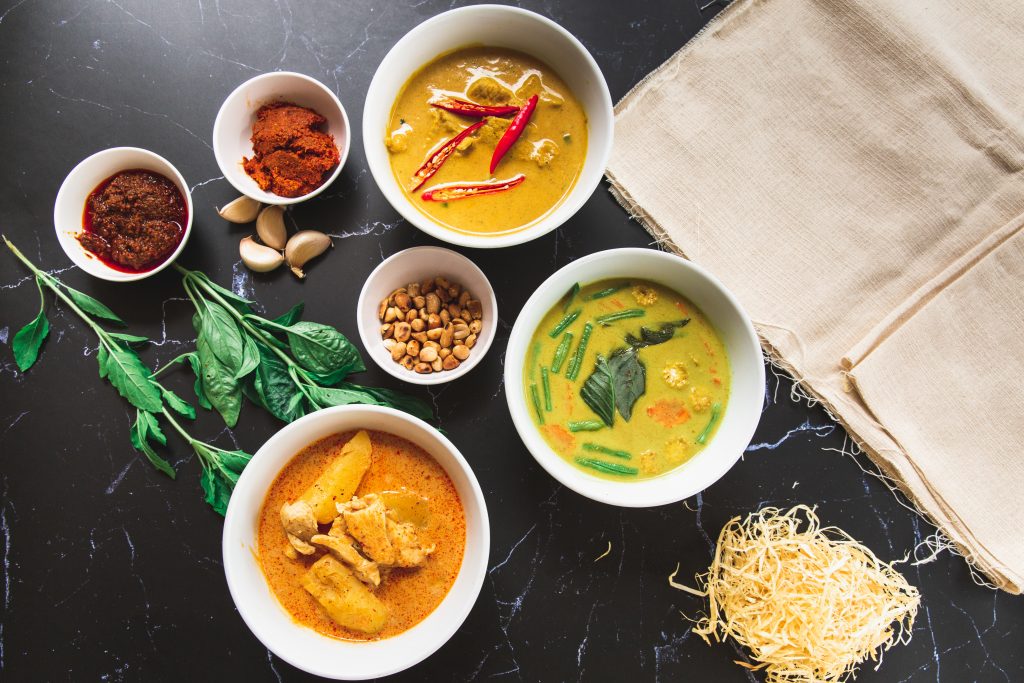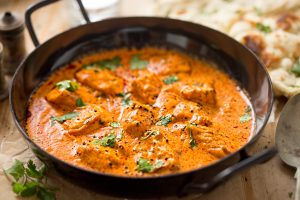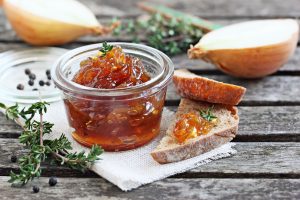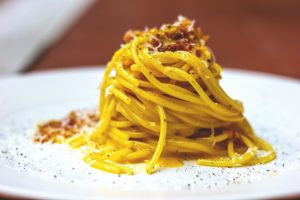Curry, a global culinary phenomenon, takes on unique forms in various parts of the world, each reflecting the rich tapestry of local flavors and cultural influences. In this exploration, we delve into the differences between Indian, Thai, Japanese, and English curries, uncovering the diverse profiles that make each a gastronomic delight.
1. Indian Curry: A Symphony of Spices
Flavor Profile: Indian curry is renowned for its intricate blend of spices, creating a symphony of flavors that dance on the taste buds. Common spices include cumin, coriander, turmeric, cardamom, and garam masala. The use of tomatoes, onions, and yogurt contributes to the rich and hearty texture.
Varieties:
- Chicken Tikka Masala: Creamy and tomato-based with tender chicken pieces.
- Rogan Josh: Aromatic and spicy lamb curry.
- Saag Paneer: Spinach and paneer (Indian cheese) in a spiced curry.
2. Thai Curry: Harmony of Coconut and Spice
Flavor Profile: Thai curry balances the heat of chilies with the creaminess of coconut milk. Red, green, and yellow curries each have their unique spice blends. Lemongrass, kaffir lime leaves, and galangal add citrusy and herbal notes.
Varieties:
- Red Curry: Spicier with red chilies and a rich coconut base.
- Green Curry: Vibrant and aromatic with green chilies and fresh herbs.
- Massaman Curry: Mild, influenced by Persian and Indian flavors.
3. Japanese Curry: Comfort in Simplicity
Flavor Profile: Japanese curry is characterized by its mild and sweet flavor. Often made with a curry roux, it incorporates ingredients like apples and soy sauce. Potatoes, carrots, and meat (usually beef or pork) contribute to its comforting and hearty nature.
Varieties:
- Katsu Curry: Served with breaded and fried cutlets (katsu).
- Vegetable Curry: A vegetarian version with an abundance of vegetables.
- Beef Curry: Classic rendition with tender chunks of beef.
4. English Curry: A Fusion of Traditions
Flavor Profile: English curry reflects a fusion of Indian and British culinary traditions. It tends to be milder compared to its Indian counterpart. Common ingredients include curry powder, chicken, and a creamy base often made with yogurt or cream.
Varieties:
- Chicken Curry: A popular choice, often served with rice or bread.
- Lamb Curry: Incorporating British favorites like lamb.
- Vegetable Curry: Embracing a variety of vegetables in a flavorful sauce.
Conclusion: Embracing Culinary Diversity
From the complex spices of Indian curry to the harmonious blend of coconut and spice in Thai curry, the simplicity of Japanese curry, and the fusion of traditions in English curry, each variety offers a unique gastronomic experience. These diverse curries not only tantalize the taste buds but also provide a glimpse into the cultural and culinary heritage of their respective regions. Whether you crave the bold spices of India, the fragrant herbs of Thailand, the comforting simplicity of Japan, or the fusion of flavors in England, the world of curry is as varied and vibrant as the cultures that inspire it.Embark on a culinary journey, savoring the distinctive delights that each type of curry brings to the global table.
Curry is a diverse and popular dish enjoyed in various cuisines around the world. In addition to Indian, Thai, Japanese, and English curries, there are many other types of curry from different regions. Here are a few examples:
Other Kinds of Curry:
- Malaysian Curry:
- Malaysian curry is known for its rich and aromatic flavors. It often features coconut milk, lemongrass, and a blend of spices. Chicken and beef are commonly used meats.
- Indonesian Curry:
- Indonesian curry, also known as “gulai,” varies across regions. It can include ingredients like coconut milk, turmeric, and galangal. Popular versions include beef rendang and chicken curry.
- Sri Lankan Curry:
- Sri Lankan curry is characterized by its use of coconut milk, cinnamon, and curry leaves. It comes in various forms, including chicken curry, fish curry, and lentil curry.
- Caribbean Curry:
- Caribbean curry is a fusion of various influences, including Indian, African, and local flavors. It often includes ingredients like coconut milk, scallions, and scotch bonnet peppers. Goat curry is a common dish.
- Vietnamese Curry:
- Vietnamese curry, or “cà ri,” is a milder curry with French influences. It typically features coconut milk, lemongrass, and potatoes. Chicken or beef is commonly used.
- Jamaican Curry:
- Jamaican curry has a distinct Caribbean flair with flavors like thyme, scallions, and Scotch bonnet peppers. It is often used in dishes like Jamaican curry chicken.
- Moroccan Curry:
- Moroccan cuisine features dishes with unique spices like cumin, coriander, and cinnamon. Tagines, often prepared with meat, vegetables, and a variety of spices, are a form of Moroccan curry.
- Ethiopian Curry:
- Ethiopian curry, known as “wot” or “alicha,” is a staple in Ethiopian cuisine. It features a blend of spices and is often served with injera (a sourdough flatbread).
These are just a few examples, and curry variations exist in many other cuisines, each offering a unique blend of spices, herbs, and ingredients that reflect the culinary traditions of their respective regions.







Be First to Comment